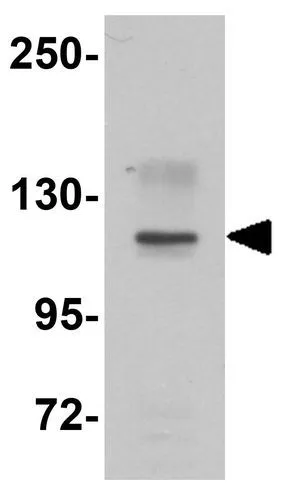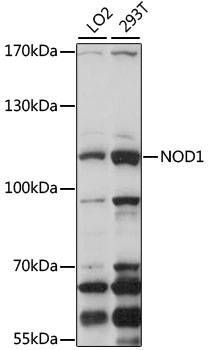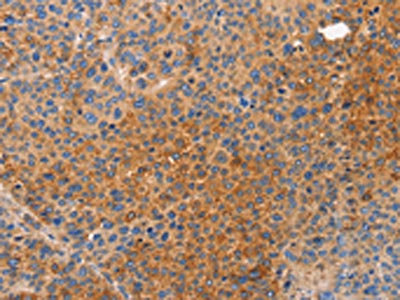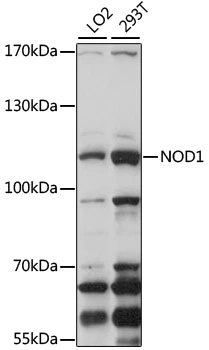
WB analysis of EL4 cell lysate using GTX31810 NOD1 antibody. Working concentration : 1 microg/ml
NOD1 antibody
GTX31810
Overview
- SupplierGeneTex
- Product NameNOD1 antibody
- Delivery Days Customer9
- Application Supplier NoteWB: 1 microg/mL. *Optimal dilutions/concentrations should be determined by the researcher.Not tested in other applications.
- ApplicationsWestern Blot, ELISA
- CertificationResearch Use Only
- ClonalityPolyclonal
- Concentration1 mg/ml
- ConjugateUnconjugated
- Gene ID10392
- Target nameNOD1
- Target descriptionnucleotide binding oligomerization domain containing 1
- Target synonymsCARD4; caspase recruitment domain family, member 4; caspase recruitment domain-containing protein 4; CLR7.1; NLR family, CARD domain containing 1; NLRC1; nucleotide-binding oligomerization domain, leucine rich repeat and CARD domain containing 1; nucleotide-binding oligomerization domain-containing protein 1
- HostRabbit
- IsotypeIgG
- Protein IDQ9Y239
- Protein NameNucleotide-binding oligomerization domain-containing protein 1
- Scientific DescriptionThis gene encodes a member of the NOD (nucleotide-binding oligomerization domain) family. This member is a cytosolic protein. It contains an N-terminal caspase recruitment domain (CARD), a centrally located nucleotide-binding domain (NBD), and 10 tandem leucine-rich repeats (LRRs) in its C terminus. The CARD is involved in apoptotic signaling, LRRs participate in protein-protein interactions, and mutations in the NBD may affect the process of oligomerization and subsequent function of the LRR domain. This protein is an intracellular pattern-recognition receptor (PRR) that initiates inflammation in response to a subset of bacteria through the detection of bacterial diaminopimelic acid. Multiple alternatively spliced transcript variants differring in the 5 UTR have been described, but the full-length nature of these variants has not been determined. [provided by RefSeq, Oct 2009]
- Storage Instruction-20°C or -80°C,2°C to 8°C
- UNSPSC12352203







